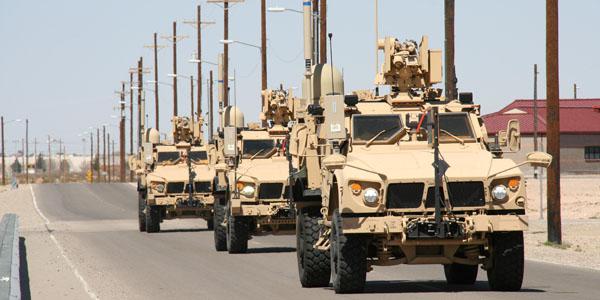PEO Spotlight: Shaking Up the Radio Marketplace
The U.S. Army, which purchases vast numbers of tactical radios, will no longer do so through sole-source contracting, vows Maj. Gen. Daniel Hughes, USA, program executive officer, command, control and communications-tactical (PEO-C3T). Competing every single contract is designed to create a radio marketplace that fosters innovation while saving time and money.
“As of right now, every radio buy will be competitive. I do not believe sole source is the way to go. I would rather compete radios because I know competing radios produces innovation and drives down the total cost of ownership of the radio itself. For example, we’ll tell vendors, ‘We need 1,000 radios. Now go kill yourselves competing on this,” Gen. Hughes says.
Under the radio marketplace concept, multiple contractors will compete to build systems, and those who prove they can meet the requirements and security standards will be placed in a pool of qualified vendors to compete on individual task orders. The service ultimately could end up with multiple vendors building a given radio system. The aim, Gen. Hughes explains, is to shorten the acquisition process and make it 24 to 36 months versus 10 years.
“We’ll compete the delivery orders on an annual basis or whenever I need to, and buy a commodity, which is that radio, on a regular basis, so industry knows how many radios I need this year and next year,” he adds. “And every year, I want them to add a feature—make it less hot, make it operate better, give me better battery life—I think that’s where we get innovation.”
The PEO-C3T office kicked off the marketplace concept in January when it issued a request for proposals for nearly 172,000 additional Rifleman Radios, a handheld system carried by soldiers at the platoon, squad and team levels that transmits voice and data beyond line of sight. The request for proposals moves the Army toward full-rate production of the system, which is part of the Handheld, Manpack and Small Form Fit program. Army officials intend to award an indefinite delivery, indefinite quantity contract to multiple vendors during fiscal year 2015.
The PEO compares the radio marketplace concept to the smartphone market, where consumers have multiple options. While he loves his BlackBerry, Gen. Hughes reveals he recently purchased an iPhone 6 “for simplicity because it connects into everything else in my house,” which ultimately is the kind of simplicity he would like to see for command, control and communications equipment on the battlefield.
The general says he intends to use the competitive marketplace approach for all radios and perhaps other technologies, including software applications. Army officials are creating a software development kit for the service’s tactical command post computing environment that will enable developers to create apps much more quickly and cheaply. “This is a different world where you don’t have this long development process that takes seven stinking years to do. Just imagine bringing an app that costs $200,000 and works right away,” Gen. Hughes states, suggesting at that price, apps can be built for a specific combat mission and possibly never used again. “Maybe we build a pool of folks who have the right chops to build an app. I’d like to say, ‘Here’s the software development kit, here are the needs we have, now go for it and compete against each other.’”
Gen. Hughes describes simplification as a top priority, including simplifying unit task reorganization. The process of reassigning or reorganizing units can take months, in part because the radios and a wide range of other network components must be painstakingly reconfigured. “We want the commander to have the ability to take a unit from A and plug it into B and not have to take days to do it. The problem I have right now is that the systems are not set up to automatically update. All my frequencies don’t change, all my data for connectivity don’t change, so we have to do that,” Gen. Hughes says. He estimates the Army has more tactical radios in a single brigade combat team than the entire Navy.
“If I get just one thing done as PEO-C3T, unit task reorganization would be the one thing I would absolutely prioritize above everything else that we’re doing,” he declares.





Comments